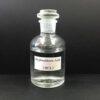- europages
- >
- COMPANIES - SUPPLIERS - SERVICE PROVIDERS
- >
- import-export - chemicals and pharmaceuticals
Results for
Import-export - chemicals and pharmaceuticals - Import export
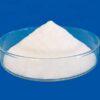
OEN CHEMICALS GMBH
Austria
Chemical appearance: The appearance of Sodium metabisulfite is either in the form of white crystals or as a powdered solid with a slight odor of sulfur. Inhalation could lead to toxic results and can cause serious damages to skin and tissue. Sodium metabisulfite is clearly soluble in water and forms a clear and colorless solution. Chemical application and strengths: The primary applications of Sodium metabisulfite are evident in the mining industry. It is used for controlling the depression of pyrites and sphalerite minerals. MBS is ideal for pH control for the froth flotation process, where it could control pyrite depression. Sodium Metabisulfite is also helpful in preventing flotation of sphalerite through copper activation with the availability of Tennantite/Covellite in the ore. In the case of pyrite flotation, the maximum iron/pyrite depression with the use of Sodium Metabisulfite is possible somewhere around the pH of 6.
Request for a quote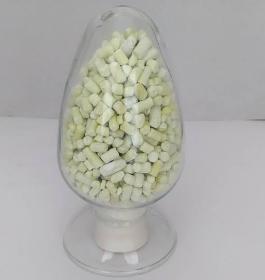
OEN CHEMICALS GMBH
Austria
Chemical appearance: Sodium Isopropyl Xanthate (SIPX) is available in the solid powder form or in the shape of pellets. SIPX has the appearance of white to yellowish deliquescent solid in the powder form. The color of the SIPX pellets varies from yellow to green. In the solid powder form, SIPX emits a slightly pungent odour. In the pellet form, SIPX emits a sulphur like odour. Chemical application and strengths: The strength of SIPX for collection is slightly higher than that of ethyl xanthate. Therefore, it serves as the perfect tool for the flotation of nonferrous metallic sulfide minerals in the form of a collector. Xanthates have been known for being an integral part of sulfide mineral flotation. SIPX is actually a salt that contains a non-polar hydrocarbon group that helps in the hydrophobic nature of sulfide material, thereby pointing out from the mineral to the solution. The salt also contains a polar group that adsorbs onto the sulfide mineral surface.
Request for a quote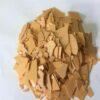
OEN CHEMICALS GMBH
Austria
Chemical Appearance Sodium Hydrosulfide NaHs is usually in the form of Yellow Flakes. Sodium hydrosulfide can also be in a solution form and appears as a colorless to light-yellow liquid. Chemical Applications NaHs main uses are in manufacturing as a replacement chemical for sulfur, as a flotation agent in copper mining where it is used to activate oxide mineral species and other various industries such as: Mining and mineral processing Tanning industry Dye industry Fertilizer industry Water treatment Manufacture of other chemicals e.g. ammonium sulphide Our sodium hydrosulfide maintains the highest quality standards required in the international market. With ISO 90001 manufacturing, we ensure high quality inputs and process to result in quality NaHS. Our clients mainly use NaHS for flotation of copper minerals. We have clients in Southern Africa, South America, Southeast Asia and other places.
Request for a quote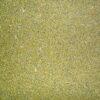
OEN CHEMICALS GMBH
Austria
Chemical appearance: Sodium ethyl xanthate or SEX is typically a yellowish powder or pellet that is soluble in water. It is a xanthate based on the C2 alkyl ethyl alcohol in the sodium salt form. Chemical application and strengths: Sodium ethyl xanthate or SEX is used in mining as a flotation agent. It is used as a collector and xanthate used especially in copper mines. It can be used for flotation of various minerals that are activated or hydrophobic and float easily such as lead, cobalt, zinc and nickel. It can form insoluble compounds with these metallic ions. Sodium ethyl xanthate is especially important in in froth flotation, where it is used to separate hydrophobic materials from hydrophilic. In mining this is an important operation to recover sulfide ores. For ores such as copper, this process lowers the costs of recovering low grade ores and can save mining companies processing costs. SEX is used a highly selective collector and is the strongest among the xanthates.
Request for a quote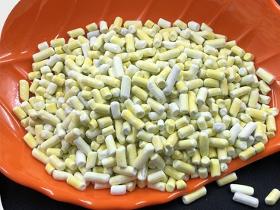
OEN CHEMICALS GMBH
Austria
Chemical appearance: Sodium ethyl xanthate or SEX is typically a yellowish powder or pellet that is soluble in water. It is a xanthate based on the C2 alkyl ethyl alcohol in the sodium salt form. Chemical application and strengths: Sodium ethyl xanthate or SEX is used in mining as a flotation agent. It is used as a collector and xanthate used especially in copper mines. It can be used for flotation of various minerals that are activated or hydrophobic and float easily such as lead, cobalt, zinc and nickel. It can form insoluble compounds with these metallic ions. Sodium ethyl xanthate is especially important in in froth flotation, where it is used to separate hydrophobic materials from hydrophilic. In mining this is an important operation to recover sulfide ores. For ores such as copper, this process lowers the costs of recovering low grade ores and can save mining companies processing costs. SEX is used a highly selective collector and is the strongest among the xanthates.
Request for a quote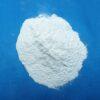
OEN CHEMICALS GMBH
Austria
Sodium Dichloroisocyanurate (SDIC) is an extremely efficient chemical compound and therefore, has many industrial applications. Its main applications and strengths are: It is used as an industrial water disinfectant. It is used in the drinking water production industries as a disinfectant. It is used to sterilise and disinfect swimming pools. It is also used as a fabric finishing agent. It can be used for the disinfection of public and private places like hospitals, homes, and hotels etc. It can be used to prevent wool from shrinking. It is used for disinfection and environmental sterilisation in livestock, poultry, and fish raising. It can also be used to prevent paper from decaying. Furthermore, it is also used for bleaching textiles. It is used in the breeding industry and aquaculture too.
Request for a quote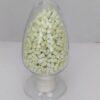
OEN CHEMICALS GMBH
Austria
Chemical Appearance Sodium Amyl Xanthate (SAX) is a sightly yellow or grey yellow powder or pellet. It is soluble in water and decomposes easily in the presence of acid and heat. It has a very pungent odour. Chemical Applications and Strengths Sodium Amyl Xanthate (SAX) is an extremely efficient chemical compound and therefore, has many industrial applications. It is most widely used as a very strong collector in the mining industry. Its main applications and strengths are: It is used as a collector in the mining industry. Collectors are chemicals that selectively attach to the surface of the mineral, making the mineral hydrophobic. Hydrophobicity is necessary for air bubble attachment in the precious metal extraction processes. Sodium Amyl Xanthate is the most powerful collector among the xanthates. It is extensively used in the flotation process of sulfide ores.
Request for a quote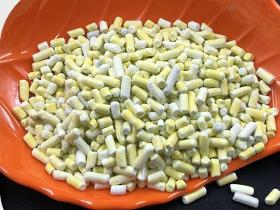
OEN CHEMICALS GMBH
Austria
Chemical appearance: Potassium Amyl Xanthate (PAX) is available in the form of yellowish or pale-grey crystals or in the form of free-flowing powder in the purest state. PAX is also available in the form of a solution. PAX is highly water-soluble and emits a slightly unpleasant odor that is similar to that of carbon disulfide or that of decaying cabbage. Another property of PAX is the absorption of moisture from air i.e., hygroscopic nature. Chemical application and strengths: The properties of PAX as a Xanthate make it the ideal collector for various nonferrous metallic ores. Potassium Amyl Xanthate is the perfect choice for flotation processes of nonferrous metallic ores as a strong yet non-selective collector. PAX works effectively as a flotation reagent in the flotation of oxide minerals such as oxidized sulfide, lead, and copper ores. PAX is also a popular flotation collector for copper-nickel sulfide and auriferous pyrite
Request for a quote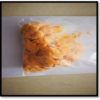
OEN CHEMICALS GMBH
Austria
Octyl Hydroxamic Acid is an organic compound. Hydroxamic acids are a class of organic compounds. They have the functional group RC(O)N(OH)R’ where R and R’ are organic residues and CO is the carbonyl group. They are amides. They are used extensively for the flotation of rare earth minerals during concentration and extraction of ores. Octyl Hydroxamic Acid is a very useful chemical compound which is made by the reaction of esters or acid chlorides with hydroxylamine salts. Its chemical formula is C9H19NO2. Chemical Appearance Octyl Hydroxamic Acid has the appearance of a dark yellow coloured solid. It has no distinct odour. It is readily soluble in water and also in alkaline solutions. It has a pH level between 10 to 13. Chemical Applications and Strengths Octyl Hydroxamic Acid or N-Hydroxynonanamide is an extremely useful chemical compound and therefore, has many industrial applications. Its main applications and strengths
Request for a quote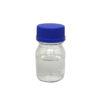
OEN CHEMICALS GMBH
Austria
Chemical appearance Methyl Isobutyl Carbinol or 4 – Methyl – 2 – Pentanol has a very clear appearance which is similar to that of alcohol and comes in a liquid form which produces a slight distinct odour which is also similar to alcohol. Chemical application and strength Methyl Isobutyl Carbinol or 4 – Methyl – 2 – Pentanol is a kind of chemical compound which is organic and is derived from acetone. In the mining industry, MIBC is popularly used as a frothing agent during the flotation processes of different minerals and also when producing additives of lubricant oils. Compared to other frothing agents, MIBC has a great selectivity and fast kinetics in the flotation process. It produces froths with are dry yet easy to break which increases the efficiency and yield of the mineral. Has little to none collector resistance and used widely in the processing of gold ores. Acts as a solvent in the extraction process of essential oils which are used in fragrances.
Request for a quote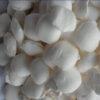
OEN CHEMICALS GMBH
Austria
Chemical appearance: Sodium cyanide is found either in the white crystalline form or in the form of granular powder. It is also water-soluble and forms a clear and colorless aqueous solution. Chemical application and strengths: The most important application of sodium cyanide is evident in the extraction of gold. The use of sodium cyanide is still the best method for mining gold. Sodium cyanide is a common agent in the leaching process for the majority of gold extraction operations. The primary reason for the use of Sodium cyanide in the extraction of gold is the higher affinity of gold towards cyanide. Sodium cyanide separates gold through oxidizing it and dissolving gold in the presence of oxygen and water. The most important strengths of sodium cyanide in the mining of precious metals are reflected in its cost-effectiveness, higher availability, and better processing
Request for a quote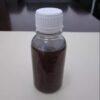
OEN CHEMICALS GMBH
Austria
Chemical appearance Alky Hydroxamic Acid has a pretty dark red colour appearance. It also comes in liquid form which has no distinct odour. It has a pH level of 10 to 13. Chemical application and strength Sodium Alkyl Hydroxamic Acid or Sodium Alkyl Hydroximic Acid is a very good collector and flotation agent with oxidized sulfide and different metallic oxides, even ones which are very difficult to extract by other collector agents. It has a strong collection power with wolframite, copper oxide ores, titanic iron, hematite, niobium ores, and many more. It can strongly extract various non-ferrous metals. In alkaline conditions, Alkyl Hydroxamic Acid is a strong floater of cobalt and copper. It should be placed in an environment away from exposure to water and extreme heat from fire and sunlight. If placed in a very cold confinement, it has the tendency to solidify. It is easily soluble in water and also in alkaline solutions.
Request for a quote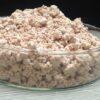
OEN CHEMICALS GMBH
Austria
Chemical appearance Salicyl Hydroxamic Acid has a pinkish orange colour and comes in powder form. It is chemically stable and has a subtle distinct odour. Chemical application and strength Salicyl Hydroxamic Acid or Salicyl Hydroximic Acid when used with iron, tin tungsten, copper, and various rare earth materials will be able to create stable chelate. In contrast, if it is used along with alkali earth metals and various alkali metals it will create unstable chelate. In conclusion, Salicyl Hydroximic Acid (SHA) has a very strong selectivity. If used with tin, it will be able to produce different complex salts, which proves its excellent selectivity towards tin. It is easily soluble within water and also in aqueous alkali solutions. In the flotation process, P86 is always partnered with SHA when extracting tin. Salicyl Hydroximic Acid (SHA) also has excellent frothing ability. Because of its characteristic of low toxicity, it is safe to use within any environment.
Request for a quote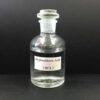
OEN CHEMICALS GMBH
Austria
Chemical Appearance Hydrochloric Acid 33% (HCl 33%) is a colourless transparent liquid. It is an aqueous solution of hydrogen chloride. It is a strong and highly corrosive acid which has a distinctive pungent odor. It is water and alcohol soluble but insoluble in hydrocarbons. It is an extremely important industrial chemical. Chemical Applications and Strengths Hydrochloric Acid 33% (HCl 33%) is an extremely efficient chemical compound and therefore, has many industrial applications. Its main applications and strengths are: It is used in the stimulation of petroleum wells. Stimulation process involves the removal of rust, scales, and undesirable carbonate deposits in oil wells. This enhances the flow of crude oil or gas to the wells. It is used in the manufacture of dyes, phenols, and plastics It is used to produce chemical intermediates like FeCl3, ZnCl2, AlCl3 and many more. It is used as a cleaning agent for household, commercial, and industrial purposes.
Request for a quote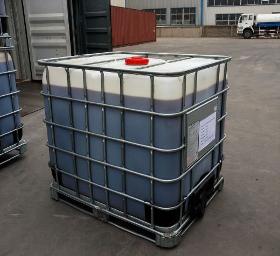
OEN CHEMICALS GMBH
Austria
Chemical appearance Alky Hydroxamic Acid has a pretty dark red colour appearance. It also comes in a thick liquid form which has no strong kind of odour. It has the tendency to solidify when exposed to temperatures which are lower than 15 ºC. Chemical application and strength Alkyl Hydroxamic Acid or Alkyl Hydroximic Acidis a very good collector and flotation agent with oxidized sulfide and different metallic oxides, even ones which are very difficult to extract by other collector agents. It has a strong collection power with wolframite, copper oxide ores, titanic iron, hematite, niobium ores, and many more. It can strongly extract various non-ferrous metals. In alkaline conditions, Alkyl Hydroxamic Acid is a strong floater of fine cassiterite It should be placed in an environment away from exposure to water and extreme heat from fire and sunlight. If placed in a very cold confinement, it has the tendency to solidify.
Request for a quote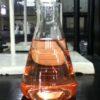
OEN CHEMICALS GMBH
Austria
Chemical appearance CC 321 has an orange colour and comes in an oily liquid form. It is not soluble in water and has no strong odour. Chemical application and strength CC 321 is widely used in the mining processes of various non-ferrous metals like lead, zinc, copper, and others. It exhibits very strong frothing ability and it is persistent and distributed well. The layer of foam produced has proper viscosity, size, and ductility. Very soluble in specific organic solvents and in alcohol. It has the ability to float coarse pellet intergrowth into the concentrate. This raises the ratio of metal recovery. Sometimes it is more preferred than pine oil in various mines. It should be placed in an environment away from exposure to water and extreme heat from fire and sunlight. It should always be placed upright and never upside downProduct OverviewChemical appearance CC 321 has an orange colour and comes in an oily liquid form. It is not soluble in water and has no strong odour.
Request for a quoteDo you sell or make similar products?
Sign up to europages and have your products listed
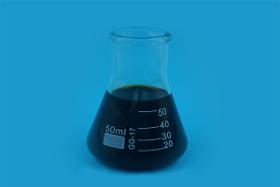
OEN CHEMICALS GMBH
Austria
Chemical appearance CC 903 has yellowish dark brown colour and come in an oily liquid form. It is not soluble in water but is soluble in specific organic solutions like alcohol. Chemical application and strength CC 903 is a new type frothing agent. These types of frothers are often used by mining companies in the flotation process of lead, zinc, copper, non – sulfide ores, sulfide ores, and many more. Key features include: Soluble in various organic solutions and has low toxic levels. It is flammable and a pine oil odour. A powerful frothing agent of non-ferrous metals which are accompanied by silver, non-metal ores, and gold. Its froth is very persistent and stable which has a great flow. It has a lower dosage than that of Pine oil. CC 903 has a better frothing ability than that of the CC 904 and both have some collection powers. They are often used in the collecting process of sulphur, talc, graphite, molybdenite, and many more.
Request for a quote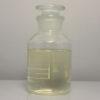
OEN CHEMICALS GMBH
Austria
Chemical appearance Dithiophosphate IBS or Sodium Diisobutyl Dithiophosphate has a yellowish and dark brown coloured appearance. It comes in a stable liquid form which has no strong smell. It has a PH level of 10 to 13. Chemical application and strength Dithiophosphate IBS or Sodium Diisobutyl Dithiophosphate is a very good collector of nickel, zinc minerals (activated), and copper ores. It is also used within gold harvesting plants because of its ability to increase harvest of precious metals. In the process of depressing iron sulphides, high levels of pH is needed which makes this floater the ideal one to use. Also great in the recovery process of refractory gold which is contained in sulphide matrices Compared to most collectors of sulphide, only a small amount of Dithiophosphate IBS is needed in the flotation process. This floater gives maximum value in recovering precious metals. It has a very minimal frothing ability which is why frothing agents are naturally used with it..
Request for a quote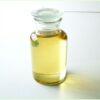
OEN CHEMICALS GMBH
Austria
Chemical appearance Dithiophosphate IBS or Sodium Diisobutyl Dithiophosphate has a yellowish and dark brown coloured appearance. It comes in a stable liquid form which has no strong smell. It has a PH level of 10 to 13. Chemical application and strength Dithiophosphate IBS or Sodium Diisobutyl Dithiophosphate is a very good collector of nickel, zinc minerals (activated), and copper ores. It is also used within gold harvesting plants because of its ability to increase harvest of precious metals. In the process of depressing iron sulphides, high levels of pH is needed which makes this floater the ideal one to use. Also great in the recovery process of refractory gold which is contained in sulphide matrices Compared to most collectors of sulphide, only a small amount of Dithiophosphate IBS is needed in the flotation process. This floater gives maximum value in recovering precious metals.
Request for a quote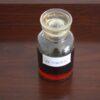
OEN CHEMICALS GMBH
Austria
Chemical appearance Dithiophosphate 25s or Hydrogen Phosphorodithioate has an appearance of a deep brown or almost black liquid. Some may classify it as a vandyck brown oily liquid and it has a density of 1.17 – 1.20. It has a PH value of 10 – 13 and a mineral substances percentage of 46 – 49. Chemical application and strength Dithiophosphate 25s or Hydrogen Phosphorodithioate is known to be a good flotation collector of copper, silver sulfide, zinc sulfide (activated), and lead ores. It can somewhat be dissolved in water. Also, it can be directly poured into ball mills and surge tanks. Hydrogen Phosphorodithioate is used mainly in the separation flotation process of ores like lead and zinc. Because of its properties it should not be subjected to intense heat like fire or extreme sunlight. Proper packaging must be observed. It is weak in collecting sulfide minerals and pyrite when in alkaline medium. It also is selective in collecting ores.
Request for a quote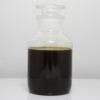
OEN CHEMICALS GMBH
Austria
Product Overview Dithiophosphates 25 is a liquid substance that has a brown-black appearance. This liquid is corrosive which also has a pungent odor. That is an inflammable substance, that is also sparingly soluble in water. Chemical Appearance The Dithiophosphates 25 is a black color substance that is made collectively from copper, lead, activated zinc sulfide ore, and silver sulfide ore. Its molecular formula is C7H7O)2PSSH. This product act with all the three medium that implies the acidic, basic and neutral medium. The major component of this chemical is Phosphorodithioic acid bis(methyl phenyl)ester. Chemical Application and Strengths The Dithiophosphates 25 has various applications and attractive points which are described below: This chemical is used in various rubber related products. It is used to collect foams due to its foaming properties. Dithiophosphates 25 is used in the float separation process, that separates the lead and zinc ore.
Request for a quote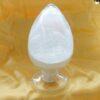
OEN CHEMICALS GMBH
Austria
Chemical appearance Dithiophosphate BA or Ammonium Dibutyl Dithiophosphate has a white and pale greyish coloured appearance. It comes in a fine powder form which has no kind of odour. It has a PH level of 9. Chemical application and strength Dithiophosphate BA or Ammonium Dibutyl Dithiophosphate is a very good collector and flotation agent of nonferrous metallic minerals like copper, zinc sulfide (activated), silver, polymetallic ores, and lead. Its pH levels are ideal in the depressing process of iron pyrites. It has is a very strong collector compared to thiocarbamates and various secondary collectors. A good flotation agent and is quite selective within acidic environments. Dithiophosphate BA can be quite weak in collecting magnetizing pyrite and pyrite but is very selective It is a very good collector of galena and can enhance the separation of pyrite and galena.
Request for a quote
OEN CHEMICALS GMBH
Austria
Product Overview Chemical appearance Amino Dithiophosphate or Thiophosphoric Acid containing nitrogen comes in powder form which has a white to light yellow appearance. It has no strong distinct smell and can be dissolved in alcohol. It also has a density of 0.8 to 0.85. Chemical application and strength Amino Dithiophosphate or Thiophosphoric Acid containing nitrogen is a very good collector agent of various non-ferrous sulfide minerals like lead, silver, copper, and zinc (activated) sulfide ores. It can be used in the activation process of pyrite flotation. A very strong collector agent compared to other Dithiophosphates. Commonly used in the flotation process of copper and lead minerals under the presence of iron and sphalerite sulfide. Popularly used because of its ability to raise the recovery ratio in the silver and gold flotation process. It is also very selective during the collection processs.
Request for a quote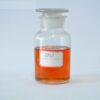
OEN CHEMICALS GMBH
Austria
Chemical appearance Isopropyl Ethyl Thionocarbamate or O – Isopropyl – N – Ethyl Thionocarbamate has a type of dark brown or amber colour and comes in a liquid form with an oily consistency. It is partially dissolvable in water and has a density of 990 – 1004 kg/m3. Chemical application and strength Isopropyl Ethyl Thionocarbamate or O – Isopropyl – N – Ethyl Thionocarbamate is another strong type of collector which has characteristics of having strong collection in the flotation process of various nonferrous metallic sulfides. Partially soluble in water but is highly soluble in benzene, petroleum ether, alcohol, ethyl ether, and many more. Has weak collective power with regards to pyrites, but is very selective in the flotation process of various sulfide ores. It should be placed in an environment away from exposure to water and extreme heat from fire and sunlight. It should always be placed upright and never upside down Compared to xanthates it has a better frothing ability.
Request for a quote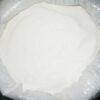
OEN CHEMICALS GMBH
Austria
Chemical appearance: Sodium Bisulfite 99% is a chemical compound created by bubbling sulfur dioxide through a solution of sodium carbonate in water. It appears solid white in color with a crystalline or granular texture. Sodium bisulfite also emits a slight sulphurous odor. It is not soluble in water and decomposes at its melting point i.e. 180C. Chemical application and strengths: Sodium bisulfite is a reliable leaching agent for cyanide detoxification in gold mining. Sodium bisulfite is used for detoxification of process leach residues along with air before discharging to the leach residue ponds. Sodium bisulfite serves as the ideal choice for leaching agent in gold mining despite the various doubts and confusion regarding suitable cyanide detoxification agents. Sodium bisulfite also finds applications for clearing oxidative corrosion in large piping systems.
Request for a quote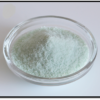
OEN CHEMICALS GMBH
Austria
Ferrous Sulfate Heptahydrate is a hydrate that is a heptahydrate form of iron (2+) sulfate. It is a very useful salt which is made as a result of oxidation of pyrite. Its chemical formula is FeSO4.7H2O. Chemical Appearance Ferrous Sulfate Heptahydrate has the appearance of a blue-green crystalline solid. It is highly soluble in water. Chemical Applications and Strengths Ferrous Sulfate Heptahydrate is an extremely efficient chemical compound and therefore, has many industrial applications. Its main applications and strengths are: Ferrous Sulfate Heptahydrate is most popularly used in mining as a fluid property modulator. It is used for the extraction of oil and gas. It is used in the manufacturing of various medicinal drugs. It is used in general adhesives. In the agricultural industry it is used for lowering the pH of highly alkaline soil. It is used as a soil amendment so that plants have access to the nutrients of the soil.
Request for a quote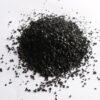
OEN CHEMICALS GMBH
Austria
Chemical appearance: Activated Carbon is the general name assigned for a group of porous carbons. The appearance of activated Carbon depends considerably on the process used for the activation of Carbon. The product is typically charcoal black with varying mesh sizes. Chemical application and strength: The primary application of granular activated carbon mesh is evident in the process of cyanidation. Cyanidation is the metallurgical process for mining gold from ore that contains cyanide. The use of physical activation involves hot gases either through carbonization or oxidation. Granular activated Carbon has an appearance just like the name indicates with the higher surface area for adsorption. Activated Carbon is produced from sources enriched in Carbon. Therefore, the surface structure of activated Carbon is very porous, and it also has a vast surface area.
Request for a quote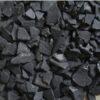
OEN CHEMICALS GMBH
Austria
Chemical appearance: Activated Carbon is the general name assigned for a group of porous carbons. The appearance of activated Carbon depends considerably on the process used for the activation of Carbon. The product is typically charcoal black with varying mesh sizes. Chemical application and strength: The primary application of granular activated carbon mesh is evident in the process of cyanidation. Cyanidation is the metallurgical process for mining gold from ore that contains cyanide. The use of physical activation involves hot gases either through carbonization or oxidation. Granular activated Carbon has an appearance just like the name indicates with the higher surface area for adsorption. Activated Carbon is produced from sources enriched in Carbon. Therefore, the surface structure of activated Carbon is very porous, and it also has a vast surface area.
Request for a quoteResults for
Import-export - chemicals and pharmaceuticals - Import exportNumber of results
134 ProductsCountries
Company type
